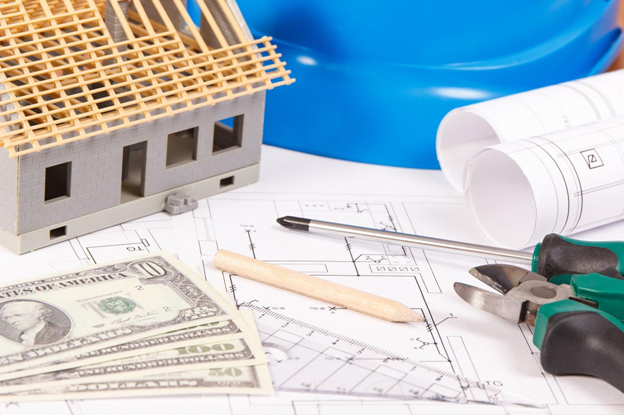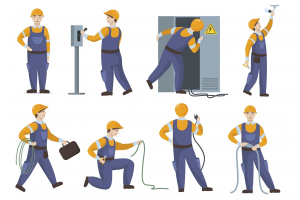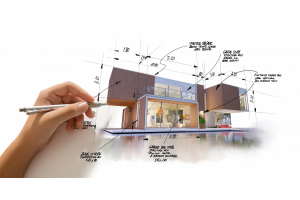
The construction industry is growing rapidly. It offers a wide range of employment opportunities to the other industries connected to it. Likewise, electrical contractors are the ones who benefit from it the most. However, we cannot overlook the fact that an increasing number of companies and the innovations in the technological landscape are altogether making the competition among electrical contractors tough, with each passing day. Most contractors performing estimates use publications that provide pricing guidelines. The two most prominent of these publishers are RS Means (https://www.buildersbook.com/estimating/rs-means-publications.html) and Craftsman National Cost Estimators (https://www.buildersbook.com/estimating/craftsman-cost-guides.html) If you want to make your mark in the construction industry, the following is the complete guide to do it the right way:
What Exactly Is Electrical Estimating?
As the name suggests, electrical estimating is done to accurately calculate the cost that will be needed to complete the construction project. Moreover, electrical estimating is also helpful in listing down the material that will be needed and the time period for the project completion. This electrical estimating is a crucial step when starting any sort of construction project and it will help the electrical contractors and the traders to improve the quality of the work that is to be done.
What Should You Do to Make Electrical Estimating Go Well?
Several factors have to be kept in mind to make electrical estimating go well. Using the historical data, you can get a clue that whether the project is worth investing effort or do you have a well-qualified crew that can pull off the project successfully. Once you are ready to bid for the project, you must do electrical estimating keeping the following information in mind:
1. Overhead
Overhead costs include all the indirect costs of the job, for example, legal fees, accounting fees, utilities, taxes, insurance, marketing, rent, etc. Incorporating overhead cost in your bid makes your electrical estimation more accurate.
2. Take-Offs
Takeoffs include estimation of all the cost of material that will be required by the electrical contractor to finish the project. Takeoff estimation can be done either manually, by using the drawings and plans to calculate the number of items needed or can be done using the software. Accurate estimation is crucial to run the project successfully else; the contractor will have to apply the change of order and the process can be time-consuming.
3. Labor Costs
Labor costs are often calculated by determining the number of laborers and how long will it take for a specific number of laborers to complete the project. It is the final step for electrical estimating to be done accurately.
What to Look for While Bidding?
Choosing the right sort of project to bid is crucial for your success as an electrical contractor. Avoid bidding for the electrical projects that do not resonate with your expertise. If you will have limited experience in the area, you are more likely to make mistakes which in turn will be harmful for your company’s reputation in the market, thus, it will take a toll on your profits.
Why You Must Review the Specifications Closely?
Specifications are what form the foundations of your contract. Paying close attention to the payment procedure, insurance policies, qualifications, or bonding capacity, etc. to make sure that your company fits all the requirements set by the contractor. Moreover, specifications also include the material or the items that the contractors need, make sure that you have all of them included in your proposal. If you have researched the specification, you will be able to make a perfect proposal that will help you win the bid.
Why You Must Not Overlook Drawings?
Researching before jumping into a venture is highly beneficial. Likewise, reviewing the drawing before signing the contract will help you to get the estimations done more accurately. Checking out the elevations and working height will help you determine the labor cost and you can get a perfect idea about what and how much material will be required for the completion of the project. Reviewing drawings will help you fix the loopholes and discrepancies between your proposal and the specifications.
How to Build Your Electrical Estimate?
Building an accurate estimate is not easy. However, keeping some basic factors in mind can help in easing the process of electrical estimating. Here are some tips that will help you build your estimate accurately:
1. Determine the Overheads
All the indirect costs incurred in the project such as utilities, marketing costs, legal costs, etc. are known as overheads. Taking all these costs into account during estimation is important because otherwise, the project will be unprofitable for you.
2. Tracking Time
Keeping track of time will help you determine the total time duration that you will spend on the project. Having an accurate idea about the time period required for the completion of a project will bring accuracy to the calculation of the labor cost.
3. Review Historical Data
Reviewing the old projects that are similar to the bid you are working for can be a great help. You can look for the estimation that can figure out any errors or over budgeting in labor or material cost and can avoid them in your project. Old projects are really helpful for calculating the labor cost.
4. Is The Project Great Fit?
Jumping blindly into a seemingly appealing thing is what puts companies in danger. Likewise, make sure that your company and team fit the requirements and specifications of the project. If the projects require the use of innovative tools and advanced technological gadgets that your workers are not skilled to use, will drastically affect your work progress and you will lose the money you are investing in.
How to Create A Good Proposal for Electrical Estimating?
Once you are done with doing the estimation and researching about the bid using the above-mentioned tips, it’s time to create a compelling proposal. Here is how to get-go:
- It should consist of all the details i.e. what does our bid include our terms and conditions etc.
- Use the same terminology to list down the specifications that were in the drawing and details given by the construction company.
- Keep everything clear. There shouldn’t be any ambiguity regarding the budget and working duration.
How to Double-check and Ensure All Aspects Electrical Estimating?
Prior to the submission of the proposal, it is always a great idea to double-check it to ensure that it is perfect, and you haven’t missed anything. It would be recommended for you to create an excel sheet to keep the things organized. This will in turn make it easy for you to review it. To check the details, you must compare it with any of the previous projects of a similar sort and the specifications listed by the construction company. Once you are done with double-checking the, you are good to move towards the submission process.
Conclusion
Electrical estimating is a vital part of any construction project because of the time it takes, and the number of items used for its completion. The estimator needs to research the project before opting to bid for it so that all the efforts and investment would not go in vain if it is not a great fit for the company. If it suits your team’s expertise, then you must work on creating a good proposal to win the bid. Since the competition is tough these days among the bidders, you must give the best of your efforts to retain the position in the industry.


